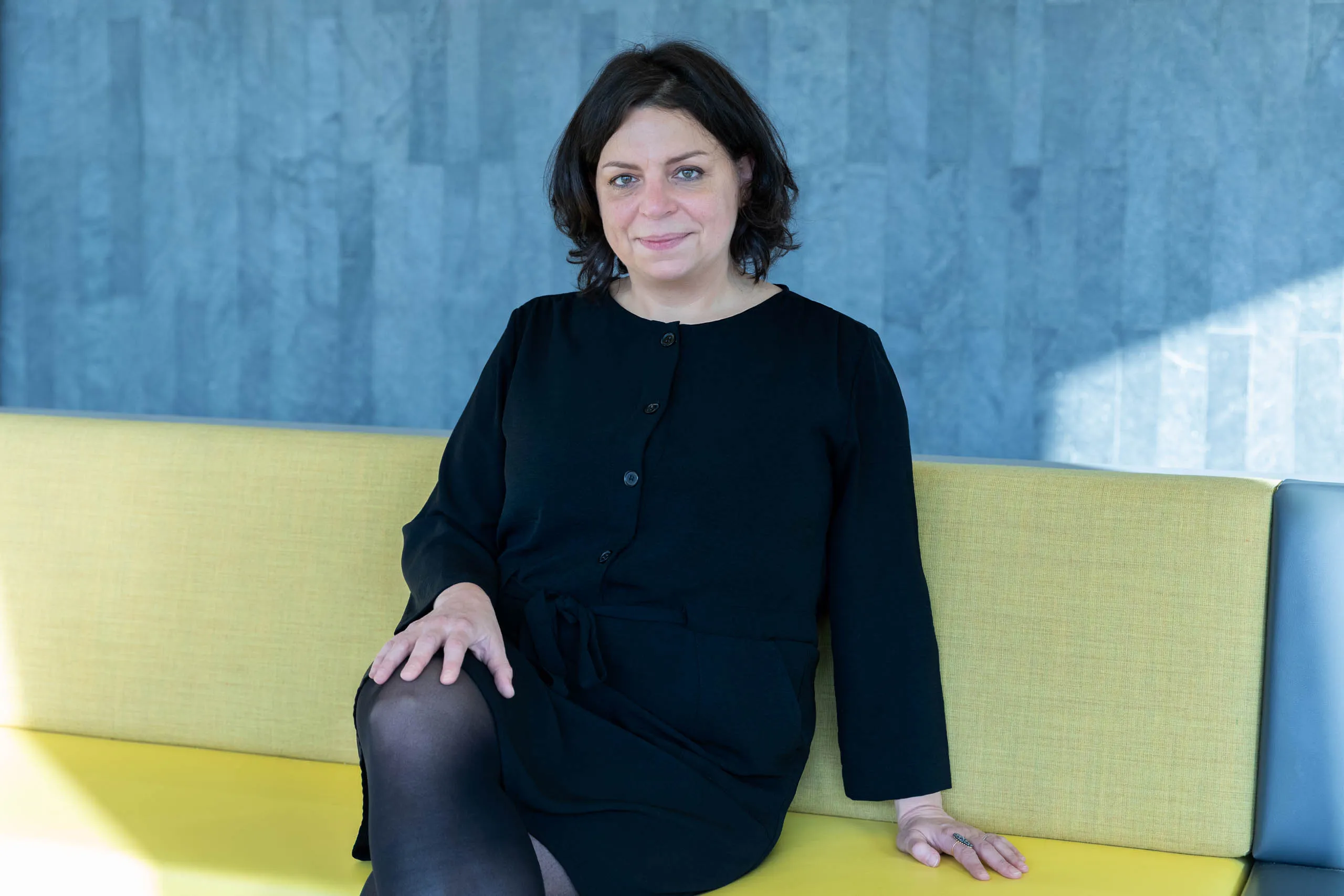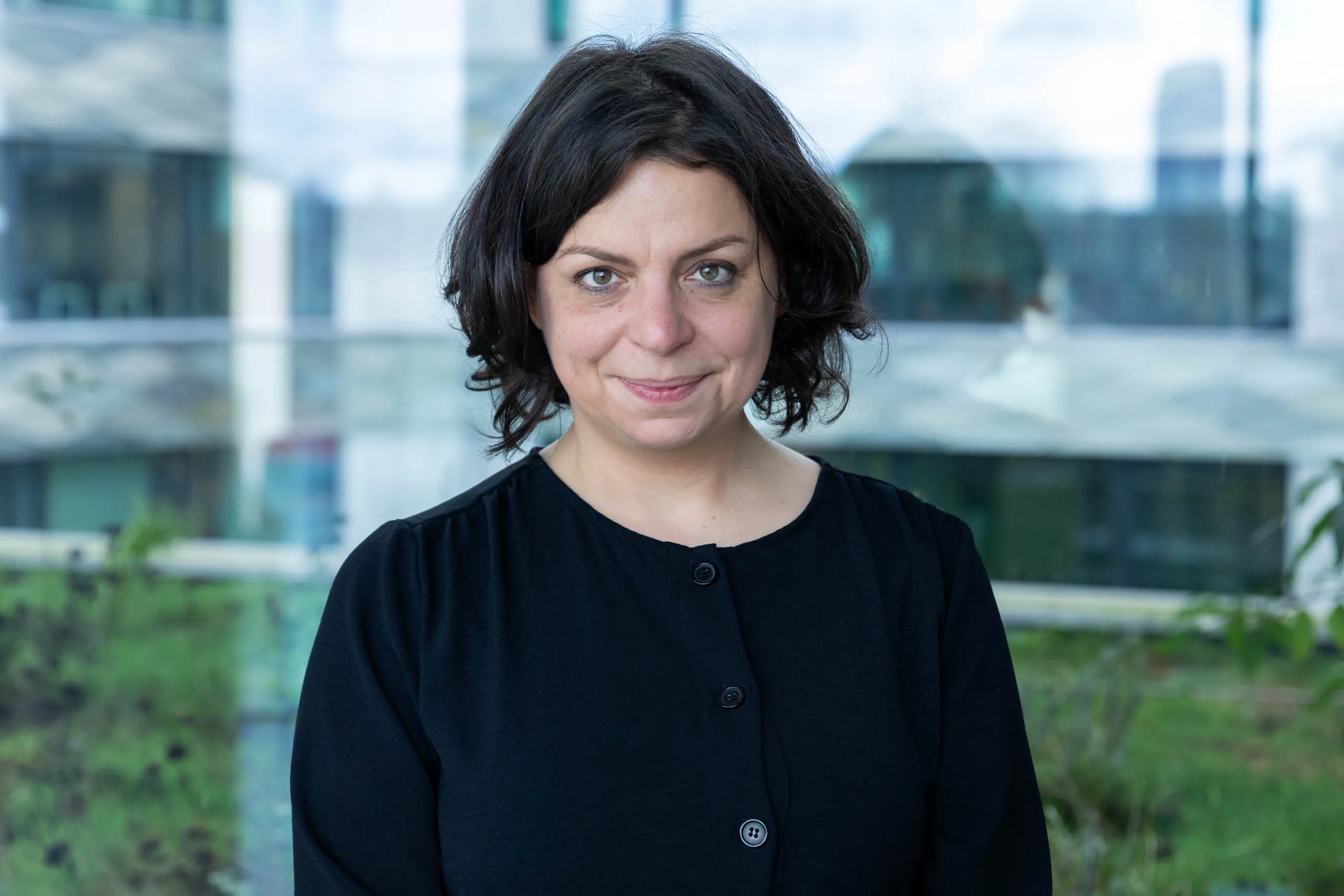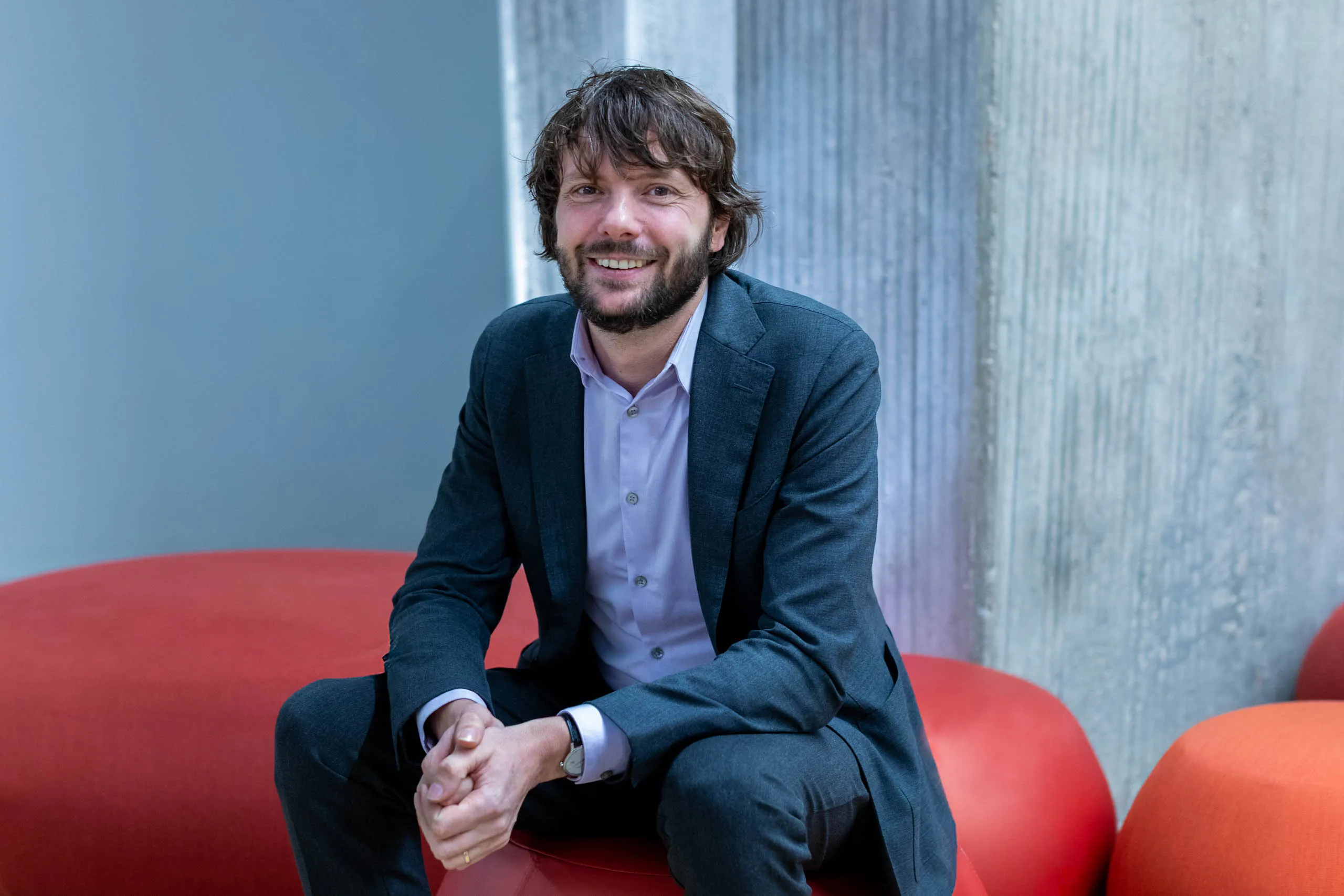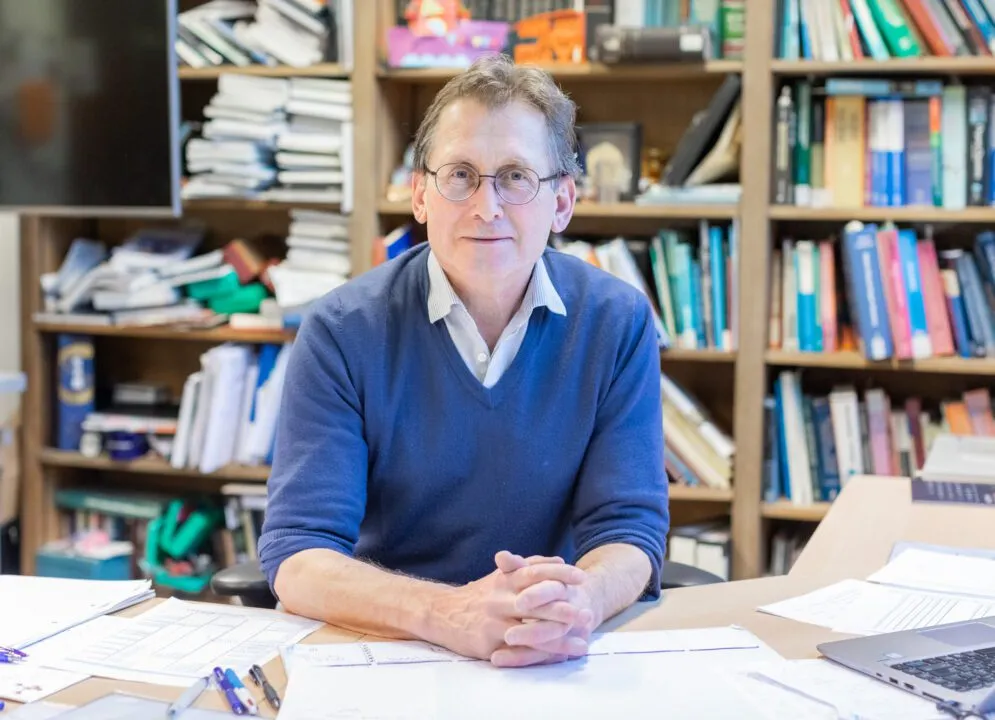Nathalie Katsonis investigates how tiny molecules can convert light and chemical energy into useful movement. By making these molecules work together in a coordinated way, she develops new materials that can adapt to their environment.
Conducting a molecular orchestra
From the industrial revolution to the mid-twentieth century, the principle ‘the harder, the better’ dominated – materials were valued for their strength and resistance. Today, scientists are looking for other properties in materials. Inspired by biological systems, they develop materials that can bend, react and communicate.
Nathalie Katsonis develops such materials. She studies so-called ‘molecular machines’, minuscule molecules that can move or change shape in response to external stimuli, including light. What is special about her work is that she succeeds in making these molecules work together in time and space. You could compare it to conducting a molecular orchestra: only when all the molecules work together does music emerge, or in this case a usable, adaptive material. Katsonis achieves this by using chirality, or the rotational direction of molecules, and by embedding the molecular machines in materials that are partly inspired by the architecture of plant tissues. The result is spectacular: her materials can pulsate, roll up, stiffen and even explode. With this groundbreaking discovery, Katsonis opened up a whole new field of research. It is considered a fundamentally new approach in materials science: instead of static materials that inevitably age, Katsonis makes materials that can continue to adapt. In the future, these materials could be used as an alternative to hard materials such as steel and ceramics, for example in medical applications.
What makes Katsonis’ work so unique is her ability to look beyond the boundaries of different scientific fields. She combines insights from supramolecular chemistry, nanotechnology and biology. Moreover, she applies molecular machines not only in materials, but also in models of simple cells.
She is now applying this knowledge in pursuit of an ambitious new goal: to understand how life on earth originated. To do so, she will focus on RNA, a molecule that was crucial for the emergence of the first living cells. The special thing about RNA is that, like the molecular machines that Katsonis studies, it performs useful work. It is, in fact, ‘the ultimate molecular machine’. By understanding how it works in simple models for the first cells, she hopes not only to learn more about the origins of life, but also to contribute to practical applications such as new medicines and vaccines. Katsonis shows that major scientific breakthroughs often start from the smallest moves.






